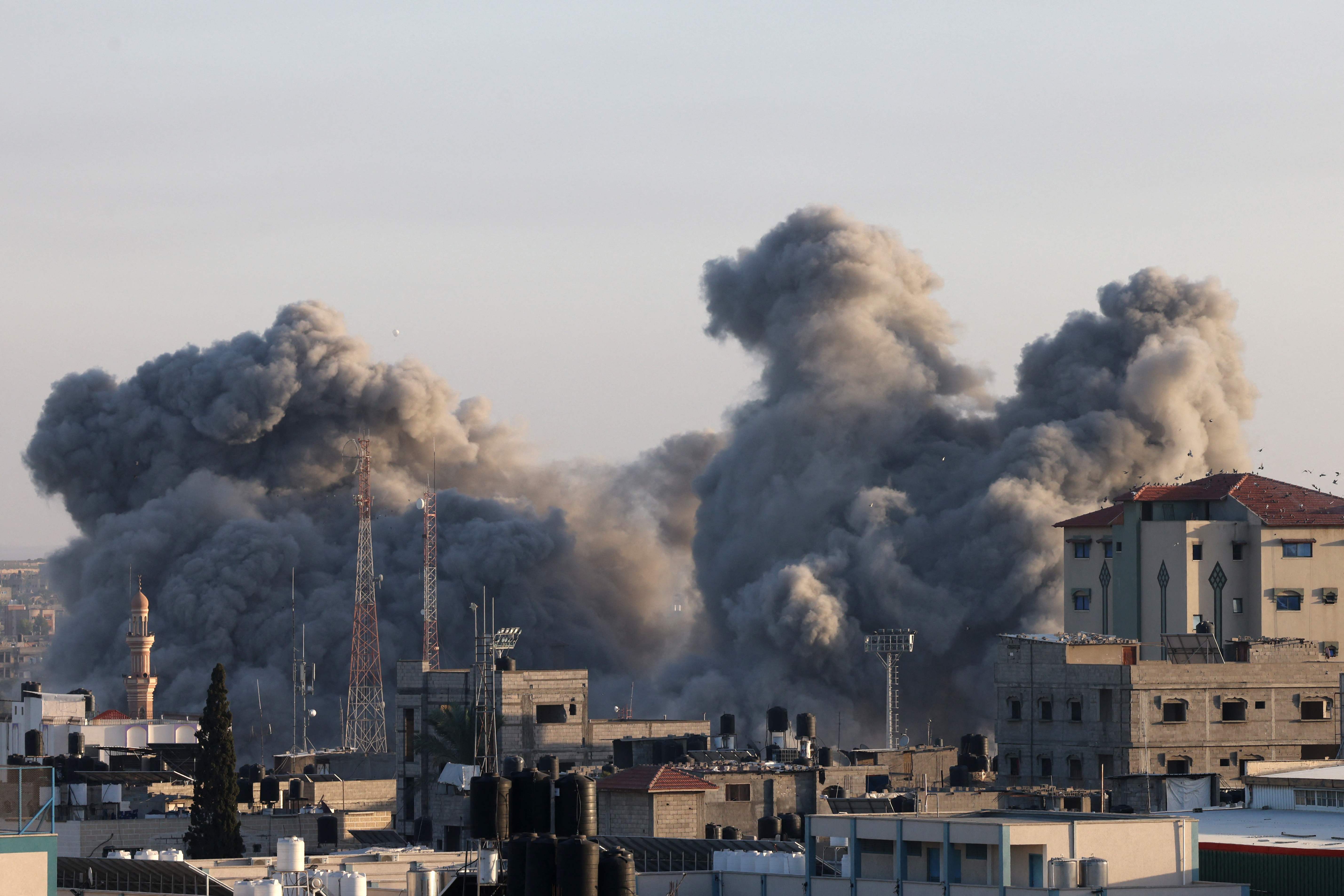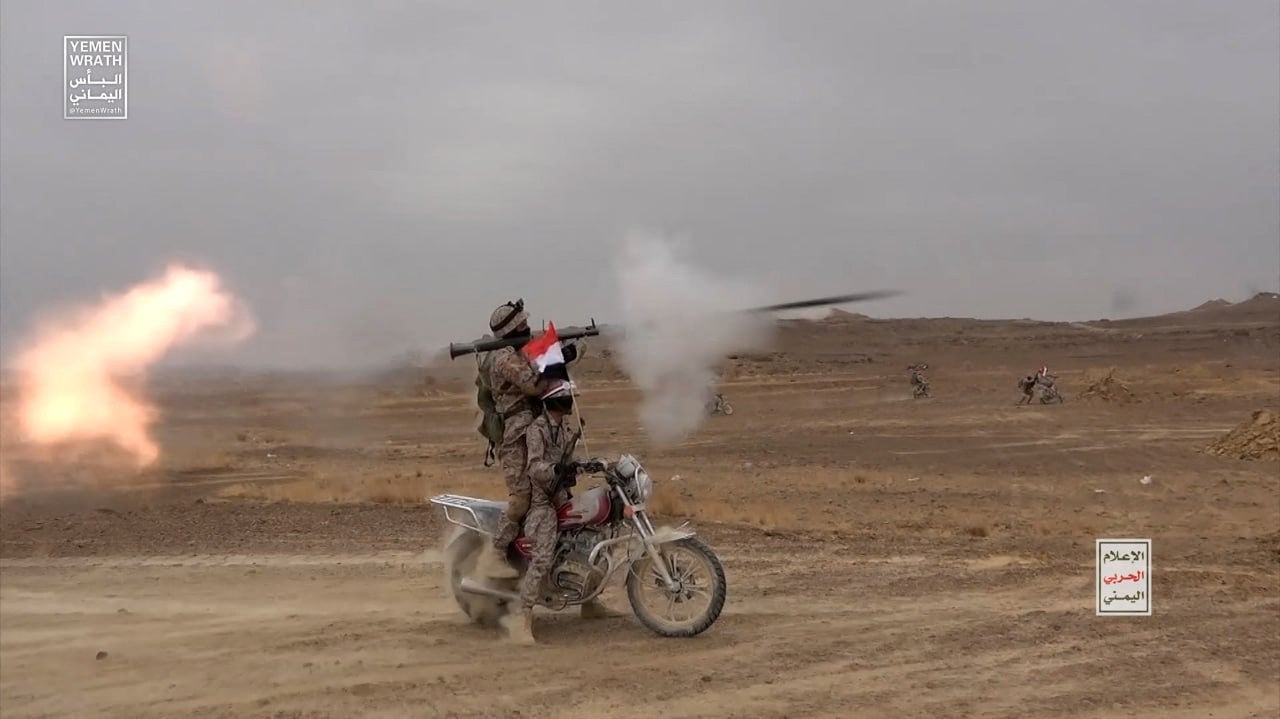Could Iran tip the Middle East into all-out war?
Iran may have denied being involved in Hamas’s deadly attacks on Israel. But its backing of what Tehran calls ‘the axis of resistance’ makes clear the country will have a major influence on whether the Israel Gaza conflict becomes a regional crisis, writes Sanam Vakil

From the outset of the 7 October attacks on Israel, Iran’s support for Hamas and its broader regional goals – including, most importantly, its long-standing hostility towards Israel – have come into sharp focus.
Questions over Tehran’s direct role in the attacks have been quickly quashed by US and Israeli officials. Iran’s supreme leader, Ali Khamenei, also denied involvement. And in a much-anticipated speech, Hezbollah leader Hassan Nasrallah also claimed that Hamas was directly and solely responsible.
But these denials neither exonerate Tehran nor promise that a broader conflict is not on the horizon. Rather, it serves as a stark reminder that Iran’s regional strategy and broader objectives are a key destabilising force in the region that requires a coordinated regional and international response.
Iran has backed groups across the Middle East – what Tehran calls the “axis of resistance” – that have used threats and attacks against Israel, which include Hezbollah, poised on Lebanon’s southern border, Yemen’s Houthis and groups based in Syria and Iraq, all of which will raise the costs of Israel’s war and signal their intent to join a transnational fight.
Recognising the real escalatory risks, US president Joe Biden swiftly deployed two aircraft carriers to the east Mediterranean and special forces to the area, as well as responding to attacks against US troops with a strike in Syria. With the possibility of a wider regional conflict looming, considering Iran’s often contradictory objectives and the operational capacity of its proxies is crucial in understanding how the conflict may develop.
Since the 1979 Iranian revolution, the government in Tehran pivoted from the warmer ties built under the monarchy towards an ideologically oppositional stance against Israel. Iran’s revolutionary leader, Ayatollah Khomeini, saw Israel as an occupying power and colonial project of the West that was undermining Palestinian and broader Muslim sovereignty.
Containing Israel’s regional influence while defending the Palestinians provided the Islamic republic with an opening to defend what it saw as an important Arab and Muslim cause and bid for regional influence over other Arab states.
Beyond the history and ideology, Tehran’s regional goals are above all driven by its quest for regime security that was formed through its experience in the 1980-88 Iran-Iraq war. The period not only saw Iran directly attacked and invaded by its neighbour at a moment of revolutionary chaos, but also saw regional and Western states directly aid Saddam Hussein against Iran. The Islamic republic survived, but it instilled a paranoid and defensive mindset among the country’s leadership that has driven its approach and support for proxy groups abroad ever since.
Building its network has taken time, with Iran opportunistically striking deals, providing regular support and developing cross-border networks in weak and fractured states such as Lebanon, Syria, Iraq, Yemen and the Palestinian territories.

Despite Israel and specifically prime minister Benjamin Netanyahu’s efforts to contain Iran, Iranian-backed groups are strategically positioned around Israel’s border, on Saudi Arabia’s border and the Bab el Mandeb. Moreover, Israeli efforts to reverse Iran’s advancing nuclear programme have also failed. From Tehran’s perspective and through its stations around the region, they have succeeded in checkmating regional opponents and protecting the home terrain.
Iran’s project to support groups fighting Israel began with the occupation of southern Lebanon in the early 1980s. Hezbollah, Iran’s closest partner, emerged during this period and became the first of many non-state actors that would receive Iranian funding, training, capacity-building and weapons. It was behind the 1983 bombing of the US Marine barracks in Beirut that killed 241 Americans and also played a key role in pushing Israel to withdraw from southern Lebanon in 2000.
But over time, Hezbollah, which like Hamas is considered a terrorist organisation by the UK and US, also became a political player in Lebanese politics – a move that would give it greater power, but also required some degree of accountability to its constituents.
In the 2006 war with Israel, Hezbollah’s military power was put on display, showcasing the group’s ability to inflict damage on its neighbour. Above all, Hezbollah’s position on Israel’s border proved that Iran’s strategy could deter attacks in and around Iran. This period was also the apogee of Iran and Hezbollah’s soft-power support across the Middle East, which Tehran is eager to recover in this current crisis.
The Hezbollah-Tehran relationship has certainly evolved into a partnership rather than a hierarchical command and control model. The influential Quds force commander, Qasem Soleimani – assassinated by a US drone strike in 2020 – was the key architect and manager of Iran’s axis of resistance. Since his death, Tehran has come to depend on Hezbollah to manage and coordinate unity among partners in Yemen, Iraq, Gaza and Syria.
During the Syrian war, Hezbollah played an instrumental role alongside Iran in supporting Bashar al-Assad, the Syrian president. Despite significant criticism for their part in suppressing a popular uprising and the decade-long massacre and displacement of Syrians, including from Hamas, they succeeded in setting up militias and positioning in the Golan area, which is now another potential front on Israel’s border.
While Hezbollah remains resilient and the strongest of the Iran-backed groups, it also faces constraints and economic pressure. The steady drip of attacks has continued at the Lebanon-Israel border, but it is unlikely that Iran or Hezbollah will seek to go further at this time. Both Tehran and Hezbollah see their conflict with Israel as a long-running one.
Iran’s support for Hamas and other Palestinian resistance groups such as Palestinian Islamic Jihad grew speculatively in the 1990s. Iran’s support is often reductively described as a Shia crescent, but this over-emphasises the sectarian nature of their relationship. Instead, this is based on ideological common ground between Iran and regional groups that remains directed towards weakening Israel. Smaller West Bank-based groups, such as the Lions’ Den, Jenin and Balata Brigade, also receive Iranian backing to that end.
The axis also has strong roots in Iraq, developed and nurtured since the 2003 US invasion. Iran-backed militias that came to be known as the Popular Mobilisation forces were behind attacks on US troops but then cooperated with the US serving as the domestic backbone in the fight against Isis. Over time, they too have developed important political and economic bases of power that have again given Iran outsized influence within the Iraqi state.
Last but certainly not least in the hierarchy is Ansar Allah, known as the Houthis in Yemen. The group emerged during the Yemeni civil war of the 1990s and became a more robust force during the Arab Spring that overthrew longtime president Ali Abdullah Saleh in 2012. With low-cost backing and support from Tehran, the Houthis have extended power in north Yemen, taking control of Sanaa while proving resilient against the Saudi-led coalition. While primarily focused on Yemeni interests, the Houthi role in the axis of resistance has been made clear by three thwarted attacks against Israel.

Overall, the local autonomy of the axis of resistance allows groups to operate as independent actors. It is important to note that Iran does not necessarily green-light or support every military or political act, and in a number of cases Tehran has cautioned groups against taking action only to be ignored. In the past, this has invited blowback for Iran but also provided it with a cover of plausible deniability that Iranian leaders like Khamenei try to exploit.
Iran’s empowerment of local partners also makes unravelling the axis more of a challenge, despite opposition to Iran and its predatory practices growing in Lebanon and Iraq where protesters have called out Tehran.
This time, though, the deniability card is a harder one for Iran to play all while it is trying to reap soft-power gains and showcase Israeli vulnerabilities. As the patron of the resistance axis, Tehran is ultimately trying to exploit sentiment against Israel, while also staving off a broader Israeli response that brings the conflict to their doorstep.
The great irony is that few Iranians support Tehran’s regional strategy. A long-chanted refrain in Iranian protests has been “not Gaza, not Lebanon, I give my life for Iran”. But despite growing domestic opposition, the Islamic republic does not factor public opinion into its foreign and security policy. It will continue to channel money and support its axis of resistance, while not showing its entire hand to the wider world.
Dr Sanam Vakil is the director of the Middle East North Africa programme at Chatham House






Join our commenting forum
Join thought-provoking conversations, follow other Independent readers and see their replies
Comments